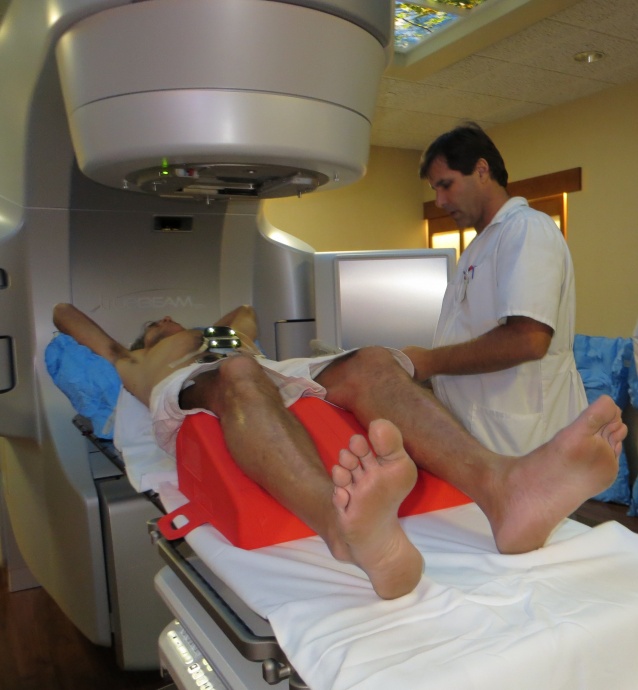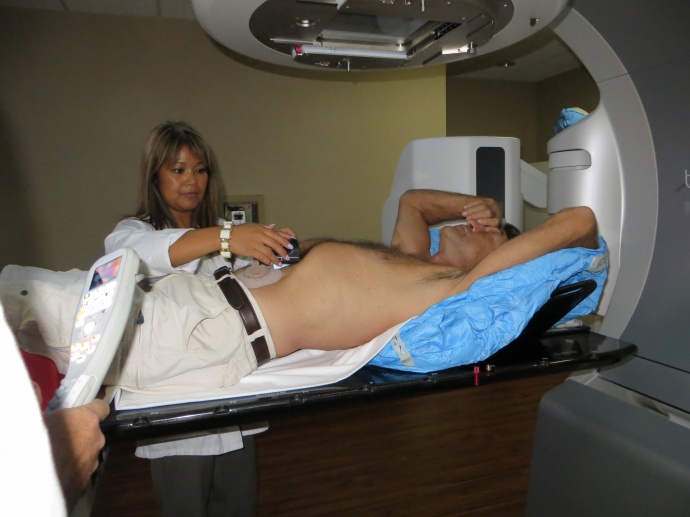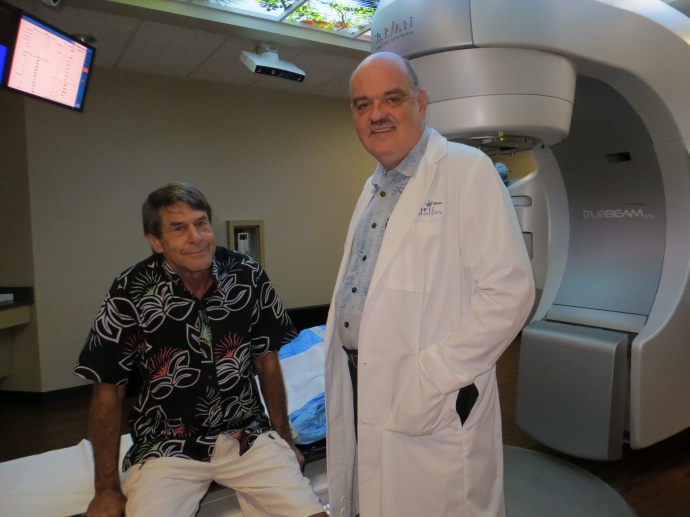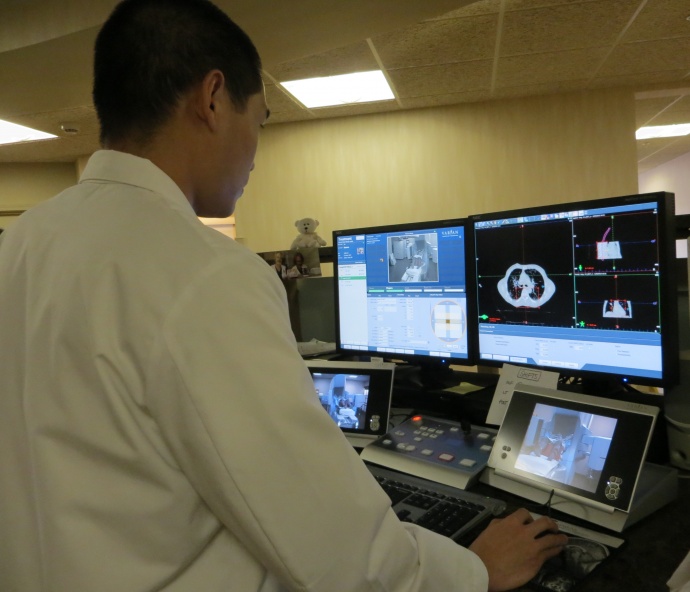Cancer Institute on Maui Targets Moving Tumors

Radiation therapist Steve Morando prepares Greg Benson, 65, of Kihei, for a new kind of radiation treatment Friday at the Pacific Cancer Institute of Maui. The Pacific Cancer Institute of Maui is the only facility in the state to offer Stereotactic Body Radiation Therapy with respiratory gating.
By Maui Now Staff
The Pacific Cancer Institute of Maui has launched a new method of treatment — the first in the state this month — to treat tumors that are moving targets.
The treatment is called Stereotactic Body Radiation Therapy and is possible following the cancer center’s acquisition of the TrueBeam STx from Varian Medical Systems.
Previously, institute officials say, oncologists faced difficulty in treating small lung tumors and liver tumors that were moving while the patient was breathing.
The first three patients to use the technology on Maui began the treatments at the center in January.
“This is one of the most exciting times in my career,” said Dr. Bobby Baker, the Pacific Cancer Institute’s founder and president. “Just when I thought I had used every tool possible in the fight against cancer, now we have this amazing system.”

Radiation therapist Nerissa Catbagan prepares patient Greg Benson, 65, of Kihei, for Stereotactic Body Radiation Therapy on Friday afternoon at the Pacific Cancer Institute of Maui. This was Benson’s fourth and final treatment this month for a moving tumor in his lung. The Pacific Cancer Institute reached a milestone in January when it began offering Stereotactic Body Radiation Therapy for its patients.
According to information released by the institute, the new Real-Time Position Management, or RPM system, can track a tumor’s movement and only treat it with radiation when it is within the target window that has been custom designed for each patient.
The targeted treatment is accomplished by the collection of breathing information on a new computer system while getting a CT Scan simultaneously.
The information is then transferred to a treatment planning system and approved by a radiation oncologist.
Data is then loaded into the TrueBeam Stx linear accelerator where a small focus of treatment is placed on the patient’s moving tumor.
Greg Benson, 65, of Kihei was one of the cancer center’s first patients on Stereotactic Body Radiation Therapy, and had his fourth and final treatment on Friday.

Dr. Bobby Baker, president and founder of the Pacific Cancer Institute of Maui, talks Friday to Kihei patient Greg Benson (left) as he prepares to receive a new treatment called Stereotactic Body Radiation Therapy. Benson is one of the first three patients on Maui to receive the treatment for a moving tumor in his lung.
“I think it’s awesome,” said Benson, who’s colon cancer had reached his lungs. “I’m really grateful to Dr. Baker for providing this. It’s like taking an X-ray,” said Benson.
“The difficulty of maintaining a stable position for a long period of time” is challenging during the treatment, but Benson said there is no pain involved.
Dr. Clayton Chen and Dr. Diane Tsai, both radiation oncologists at the institute, share in Dr. Baker’s excitement and are also treating patients with Stereotactic Body Radiation Therapy.
A team of specialists from the University of California San Diego, who have the same system, spent a week this month on Maui to provide support the cancer institute’s staff.
David Doan, a CT Scan trainer for the RPM system from GE Medical Systems commented on the technology being offered on Maui saying, “This facility was the most prepared that I have ever worked with to start this new respiratory motion program.”

Radiation oncologist Dr. Clayton Chen oversees a new and first-time offering of a treatment called Stereotactic Body Radiation Therapy at the Pacific Cancer Institute of Maui. In this photo, Chen reviews cat scans produced on the cancer center’s TrueBeam STx to confirm accurate positioning before delivery of the radiation treatment.
Baker and Tom Sullivan, a physicist with Pacific Cancer Institute, earned certificates of training for Stereotactic Body Radiation Therapy last year from the Stanford University School of Medicine Symposium.
Facility officials say the new system at the Pacific Cancer Institute of Maui allows for the treatment of curative small lung cancers for patients who couldn’t or didn’t want to have surgery.
It is also designed to treat metastatic tumors in the lung and liver. Pancreas tumors are being treated with this technology as well.
The radiosurgery is considered non-invasive because the procedure requires no scalpels, incisions or needles.
“I have been treating cancer patients with radiation for about 30 years,” Baker said. “Now I am going to focus the rest on my career on providing the best radiosurgery for our patients.”










